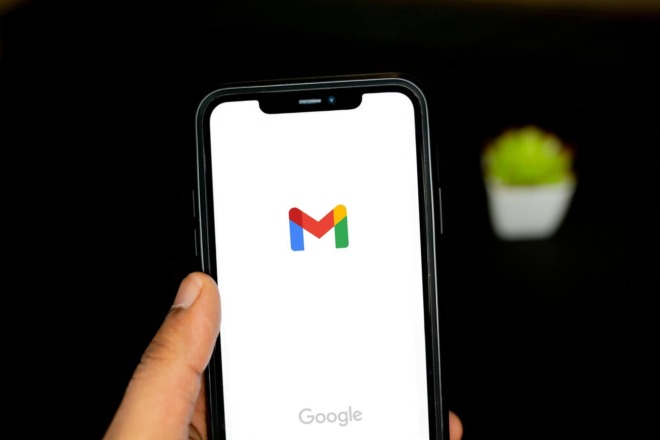Think back to the last time you listened to a speaker who really enthralled you. More than likely, what you remember is a story that person told. Storytelling is a basic element that connects us to other humans. It is an art as old as time, and it matters on the web as much as it matters in real life.
Roughly 55% of people hop onto your site for 15 seconds and then bounce away. What if you could change those numbers? What if you could reduce your bounce rates with a simple technique?
You can. That technique is telling stories. However, there are also some solid reasons, backed by research and common marketing knowledge that prove storytelling is a vital part of grabbing your readers’ attention and keeping it. Here are six reasons why you should include storytelling on the web:
1. Stand out From the Crowd

Courtesy of Giphy
Did you know that the average person reads around 100,500 words on digital media every day? They are inundated with marketing campaigns. After reading that many words, it all becomes a blah, blah, blah blur of language.
You can make your writing stand out from that on other sites because no one else has the exact same life experience you have. Sharing a personal story allows your audience to connect with you. Suddenly, reading your article is like having a conversation with a good friend over a cup of coffee.
Businesses can benefit from this technique because the reader will stay on the site longer and actually read interesting and engaging content. Try to come up with at least one example for each article you write that you can relate back to a story. If you don’t have a personal story, create a fictional character and tell their story.
2. Incorporate Images More Easily Into Your Content
You’ve heard the saying about a picture being worth a thousand words. There is a reason people say that. Images have a huge impact on how engaged we are. The human mind processes an image about 60 times faster than words.
Stories may make it easier to incorporate images into your content. Using a mixture of images and words allows the visitor to process more of the content. The more the visitor processes, the more likely they will stay on your page and finish the article.
Businesses can benefit from this knowledge by including tables, charts, photos, screenshots and infographics into posts.
3. Become More Memorable

Courtesy of Giphy
Studies show that storytelling actually releases the chemical dopamine in the brain. Dopamine helps people with memory accuracy. This means if you can connect with your audience through a story, then they are more likely to remember your article and what it was about.
This means another benefit of storytelling is that it becomes more likely your readers will tell others and visit your site again in the future.
4. Develop a Formula for Success
Did you know that many people consider there to be seven master plots? This is up for some debate, of course. You’ll hear that there are 20, or only one — the hero’s journey — but seven is a good solid number to work with for the purposes of storytelling on your website. The seven plots are:
- Overcoming the Monster
- The Quest
- Tragedy
- Rebirth
- Romance
- Voyage and Return
- Rags to Riches
You can tell a true story about someone you know or about yourself. You can also make up a character and story. The benefit of sticking to one of the master plots is that it will be harder to wander off on tangents that have nothing to do with the point you’re trying to prove.
5. Be Pertinent to Your Audience

Courtesy of Giphy
Another benefit of storytelling is that you can focus on the things that are important to your target audience. For example, if your audience typically asks how to get grass stains out of white football pants, then this is a problem that needs solving.
You can easily incorporate a familiar scenario into your article that will resonate with your readers. Invent a football mom who is frustrated because she can’t get the green stains off her son’s uniform.
As you tell her story, you can also offer the solution. Example: “If Mary Jane had only presoaked the pants in my special grass stain remover solution, she wouldn’t have been so frustrated.” You can then share your recipe for the special grass stain remover solution or offer a link to the product you are selling.
The benefit of writing something your audience can relate to is they will see that you understand the dilemmas they are facing, and you want to offer viable solutions. They will begin to trust you and your authority on the matter.
6. Break Down Big Concepts

Courtesy of Giphy
Do you write about topics that are advanced or technical? Difficult topics or topics that are lengthy can be more easily digested when you incorporate a story. Invent a character and follow their progress throughout the lengthy process by updating the character’s steps.
As an example, let’s say you are writing an article on how to tear apart an engine and put it back together. You invent a college student named Dan. Dan can’t afford to buy a new car, but his engine needs to be rebuilt.
As you describe the steps the person rebuilding an engine needs to take — complete with pictures and diagrams, of course — you can also walk Dan through the process.
The reader will better digest what you are describing as you explain the steps Dan is taking to repair his car. Make sure you end the story with Dan’s success and his happiness that his car will now last him until he can graduate and afford a newer model. This benefits your readers because they will remember the steps Dan took and more easily complete their own project.
Adding stories into your writing can make it much more compelling. Sometimes a reader visits to learn one thing but walks away wanting to acquire a new skill. When that reader wants to learn a new skill, they will likely come back to your site to gather more information on a topic you’ve proven you know a lot about.
About The Author
Eleanor Hecks is the Editor-in-Chief of Designerly Magazine, an online publication dedicated to providing in-depth content from the design and marketing industries. When she's not designing or writing code, you can find her exploring the outdoors with her husband and dog in their RV, burning calories at a local Zumba class, or curled up with a good book with her cats Gem and Cali.
You can find more of Eleanor's work at www.eleanorhecks.com.



Awesome tips Eleanor. I think incorporating stories can really drive more attention in an article. Do you think putting stories in informative guide/posts can also be possible?
Great question, Emmerey! I do believe it helps to break down a ton of information and puts it in terms that your audience can grasp. Granted, keeping the story pertinent to your readers is key. And like I mentioned in the post, visuals are helpful, too!
Thank you for reading!
Thanks Eleanor! Will be looking forward for more informative pieces from you 🙂